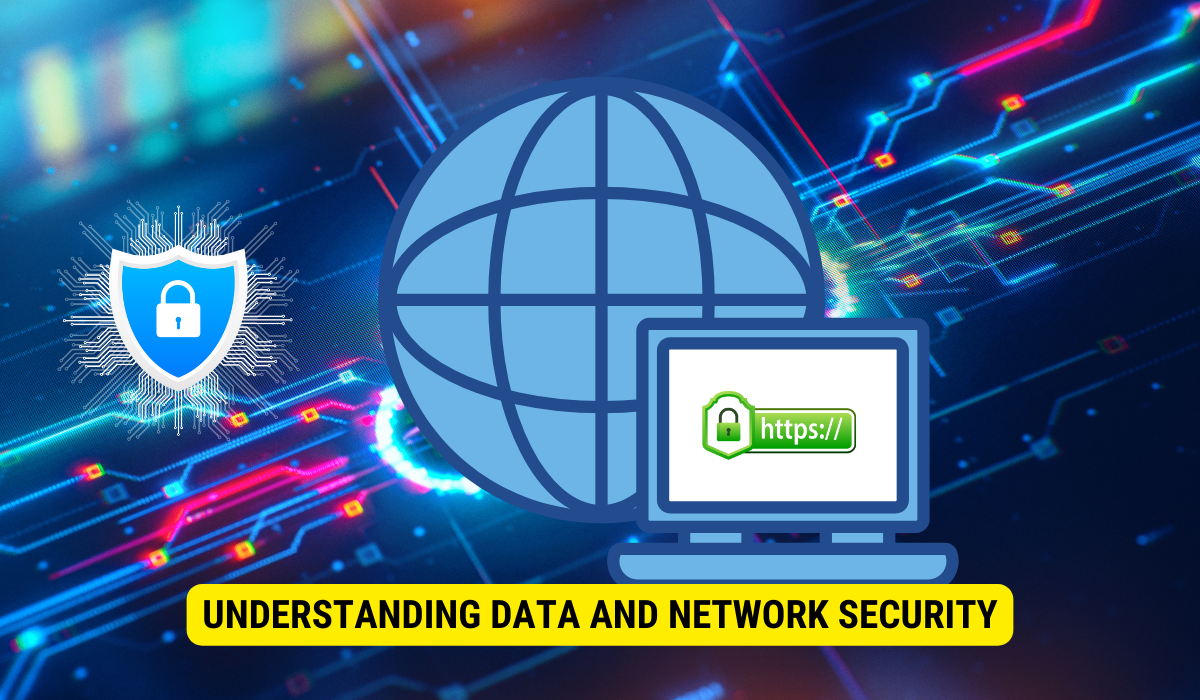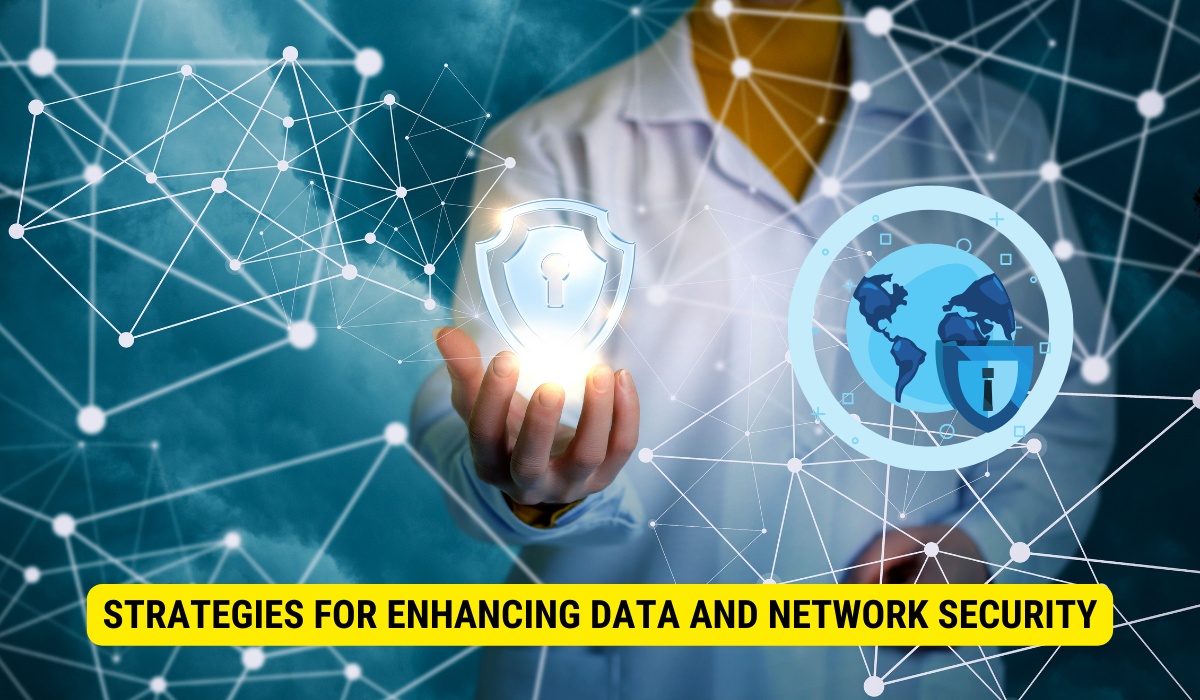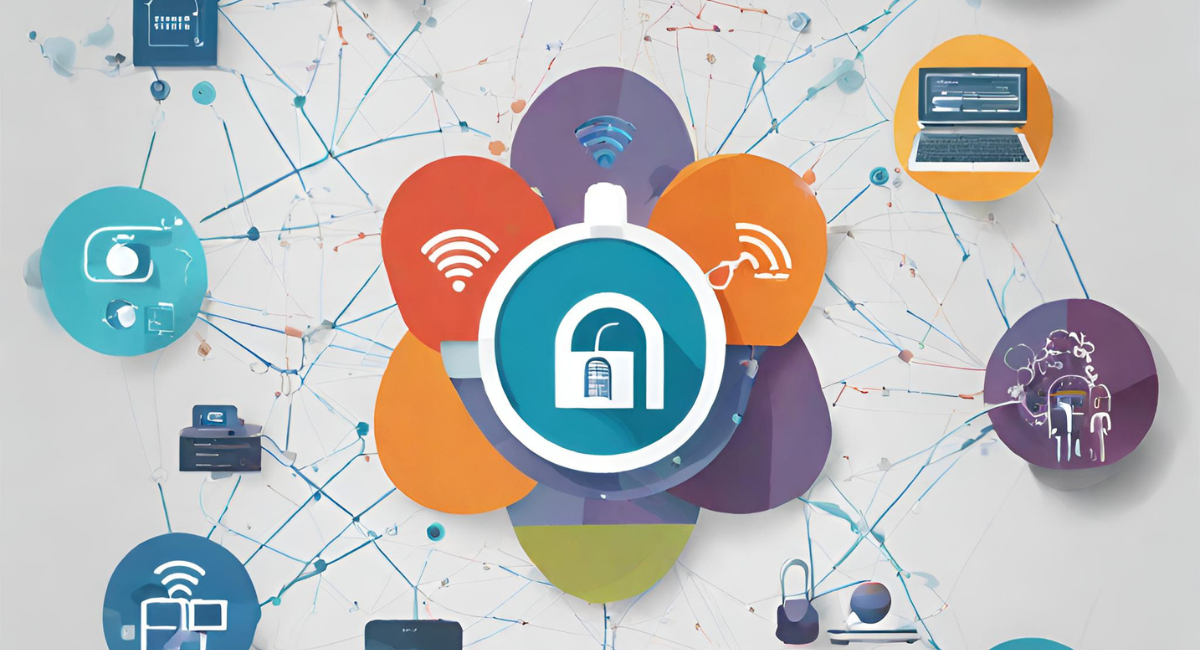Data and network security are integral components of information technology (IT) systems, playing a significant role in safeguarding sensitive data and communications from cyber threats and unauthorized access.
Data and network security are critical components of information technology (IT) systems. Organizations must prioritize protecting sensitive information in the current digital era, where data breaches and cyber threats are becoming increasingly prevalent. I will aim to provide a comprehensive understanding of data and network security, their importance in IT, key components, challenges, strategies for enhancement, and future trends.
Understanding Data and Network Security
The Importance of Data Security in IT
Protecting information involves strategies and actions to prevent unauthorized individuals from accessing, altering, or misusing confidential data. In IT, data is an invaluable resource that demands stringent protection. The aftermath of data breaches can be detrimental, leading to monetary setbacks, tarnished reputation, and legal challenges. As a result, instituting rigorous data protection practices is pivotal to upholding the confidence of clients and partners.
When delving into data protection, several facets warrant attention. Encryption is a key element, transforming data into an undecipherable code unless decrypted using the correct key. This ensures that unauthorized access won’t lead to the comprehension or misuse of the data. Additionally, controlling access is imperative. This means designating specific permissions to certain individuals while barring others from accessing critical data. Companies can be assured through these mechanisms that only designated personnel can interact with crucial information.
Furthermore, organizations must also focus on data backup and recovery strategies. Regularly backing up data ensures that organizations can restore their systems and recover lost data even if a breach occurs. Additionally, organizations should consider implementing intrusion detection and prevention systems to detect and block any unauthorized attempts to access their networks. These systems monitor network traffic, identify suspicious activities, and take necessary actions to prevent potential threats.
The Role of Network Security in IT
Protecting the communication infrastructure from unauthorized access, exploitation, or disturbances is the essence of network security. It integrates various tools, strategies, and protocols to guard sensitive data from illicit access as it traverses networks. Data confidentiality, integrity, and constant availability are fundamental to network security.
A cornerstone of network security is the firewall. As a shield, firewalls stand between an entity’s internal systems and external networks, such as the World Wide Web. Following pre-established security criteria, they oversee and dictate the flow of traffic entering and leaving the network. They are crucial in thwarting unauthorized network penetrations and defending against multiple cyber adversaries, including malicious software, infectious agents, and intrusive efforts.
Beyond firewalls, entities can utilize virtual private networks (VPNs) to bolster their network’s defenses. VPNs foster a protected and ciphered bridge between off-site users and the entity’s core network, ensuring that the data relayed remains shielded from eavesdropping.
Another layer of protection is deploying intrusion detection and prevention mechanisms (IDS/IPS). These tools monitor network activity, scrutinizing it for any anomalies and initiating corrective measures against perceived threats. They can detect, thwart, and neutralize unwarranted access endeavors, harmful software, and other network-centric assaults.
Furthermore, the institution of rigorous verification processes, such as dual-factor authentication (2FA) or biometric verification, is a prudent step. This ensures that network access is granted only to validated users. Organizations markedly diminish the possibility of illicit penetrations by instituting multiple verification steps.
In a nutshell, safeguarding data and the underlying network is paramount in today’s digital landscape. Entities should prioritize comprehensive security provisions, ensuring their digital frameworks’ sanctity and unhindered operation. Embracing ciphering, entry regulation, data redundancy, firewalls, VPNs, IDS/IPS, and stringent verification methods can significantly curtail the vulnerabilities tied to data exposures and unauthorized intrusions.
Key Components of Data and Network Security
Data and network security is a critical aspect of modern information technology systems. It involves safeguarding sensitive data and protecting network infrastructure from unauthorized access, breaches, and malicious activities. Several key components play a vital role in ensuring the security of data and networks.
Firewalls and Intrusion Prevention Systems
Firewalls and intrusion prevention systems (IPS) are pivotal in safeguarding data and network integrity. Acting as protective barriers, firewalls stand between a secure internal network and potential external threats, scrutinizing both inbound and outbound traffic against established security criteria. These systems analyze data packets, ascertain their origin and endpoint, and decide whether to permit or restrict the traffic based on set guidelines.
Firewalls come in different types, including network firewalls, host-based firewalls, and application firewalls. Network firewalls are typically deployed at the network perimeter to protect the entire network, while host-based firewalls are installed on individual devices to provide an additional layer of protection. On the other hand, application firewalls focus on specific applications and protect against application-level attacks.
On the other hand, intrusion prevention systems (IPS) continuously monitor network traffic and detect and block malicious activities, such as intrusion attempts and network-based attacks. They analyze network packets in real time, comparing them against known attack patterns and signatures. If a potential threat is detected, the IPS takes immediate action to prevent the attack from compromising the network.
Modern firewalls and IPS solutions often include advanced features like deep packet inspection, virtual private network (VPN) support, and threat intelligence integration. Deep packet inspection allows the inspection of the entire packet payload, enabling the detection of hidden threats and attacks. VPN support ensures secure remote access to the network, protecting data transmission over public networks. Integration with threat intelligence services enhances the ability to identify and respond to emerging threats.
Anti-virus and Anti-malware Solutions
Anti-virus and anti-malware solutions are crucial for detecting, preventing, and removing malicious software from IT systems. These solutions employ various techniques, such as signature-based detection, heuristic analysis, and behavior monitoring, to identify and eliminate viruses, worms, Trojans, ransomware, and other forms of malware.
Signature-based detection involves comparing files and programs against a database of known malware signatures. If a match is found, the anti-virus software takes appropriate action, such as quarantining or deleting the infected file. On the other hand, heuristic analysis looks for suspicious patterns and behaviors that may indicate the presence of malware. It helps detect previously unknown threats that do not have a specific signature.
Behavior monitoring is another important technique used by anti-virus and anti-malware solutions. It involves monitoring the behavior of programs and processes in real time, looking for any abnormal activities that may indicate malicious intent. For example, the anti-malware solution can block the activity if a program starts modifying critical system files or attempting to access sensitive data without authorization.
Regular updates and scans are necessary to keep these solutions effective against emerging threats. Anti-virus and anti-malware vendors continuously update their databases with new malware signatures and behavior patterns to stay ahead of cybercriminals. Regular scans of the system help identify potential threats that may have bypassed the real-time protection.
In addition to traditional anti-virus and anti-malware solutions, organizations often employ advanced endpoint protection platforms that combine multiple security technologies into a single solution. These platforms may include features like advanced threat detection, sandboxing, file reputation analysis, and machine learning algorithms to provide comprehensive protection against evolving threats.
It is important to note that while firewalls, intrusion prevention systems, and anti-virus/anti-malware solutions are crucial components of data and network security, they are not standalone solutions. A comprehensive security strategy also includes other measures such as access control, encryption, security awareness training, regular backups, and incident response planning.
Challenges in Data and Network Security
Evolving Cyber Threats
One of the main challenges in data and network security is the ever-evolving nature of cyber threats. Cybercriminals continually devise new techniques to exploit vulnerabilities in IT systems. Organizations must stay vigilant and adapt their security measures to counter these evolving threats, from sophisticated phishing attacks to ransomware campaigns.
Insider Threats and Human Error
While external threats often capture the spotlight, insider threats and human error can also pose significant data and network security risks. Insider threats may arise from disgruntled employees, contractors, or anyone with authorized access to sensitive information. Human error, such as accidental data breaches or misconfigurations, can compromise IT security. Organizations must implement access controls, employee training programs, and strict data-handling procedures to mitigate these risks.
Strategies for Enhancing Data and Network Security
Regular System Updates and Patches
Keeping IT systems updated with the latest security patches and updates is crucial for addressing known vulnerabilities. Software vendors frequently release patches that address security flaws and enhance system resilience. Organizations must establish a robust patch management process to ensure timely application of these updates across their IT infrastructure.
Employee Training and Awareness
Human behavior is a critical factor in data and network security. Organizations should invest in comprehensive training and awareness programs to educate employees about best practices, security policies, and the potential risks associated with data breaches. By developing a culture of cybersecurity awareness, organizations can empower their employees to become the first line of defense against cyber threats.
Future Trends in Data and Network Security
AI and Machine Learning in Security
Artificial intelligence (AI) and machine learning (ML) are revolutionizing the field of data and network security. These technologies enable organizations to detect patterns, anomalies, and potential threats faster and more accurately. AI-powered security solutions can analyze vast data in real time, identify emerging threats, and automate incident response processes, enhancing overall IT security posture.
The Impact of IoT on Network Security

The proliferation of internet-connected devices in various domains, collectively known as the Internet of Things (IoT), poses new challenges for network security. IoT devices, from smart home appliances to industrial sensors, are potential entry points for cyber attacks. Securing these devices, managing their vulnerabilities, and implementing robust authentication mechanisms are critical for maintaining a secure network environment.
Key Takeaways
- Data and network security are pivotal components in the IT domain, ensuring the safety and integrity of sensitive information.
- While data security focuses on specific data assets, network security emphasizes the protection of the communication infrastructure.
- Key components like firewalls, intrusion prevention systems, and anti-virus/anti-malware solutions ensure robust data and network security.
- The evolving nature of cyber threats, insider risks, and the challenges posed by IoT devices underlines the need for continuous adaptation and enhancement in security strategies.
- Evolving technologies like AI and machine learning revolutionize data and network security, offering faster and more accurate threat detection and mitigation.
FAQs
What is data security in the context of IT?
Data security in IT refers to measures and practices implemented to protect sensitive information from unauthorized access, use, disclosure, alteration, or destruction.
How does network security differ from data security?
While data security focuses on safeguarding specific data assets, network security focuses on protecting the infrastructure supporting data transfer and communication.
Are firewalls a part of network security?
Yes, firewalls are a primary component of network security, acting as a barrier between an organization’s internal network and external networks, filtering traffic based on security rules.
How are AI and machine learning influencing data and network security?
AI and machine learning enable advanced threat detection by analyzing large datasets in real time, identifying patterns and anomalies, and automating incident response, enhancing overall IT security.
What challenges do IoT devices present for network security?
IoT devices, being internet-connected, can be potential entry points for cyberattacks. Securing these devices and managing their vulnerabilities is essential for maintaining network integrity.
Conclusion
In conclusion, data and network security are indispensable aspects of information technology. Organizations must prioritize implementing comprehensive security measures to safeguard their valuable data from ever-evolving cyber threats. Organizations can establish a strong security posture by understanding the importance of data security, the role of network security, key components, challenges, and effective strategies. Furthermore, by embracing emerging trends such as AI and ML and efficiently addressing the impact of IoT, organizations can adapt to the evolving threat landscape and better protect their IT infrastructure.
